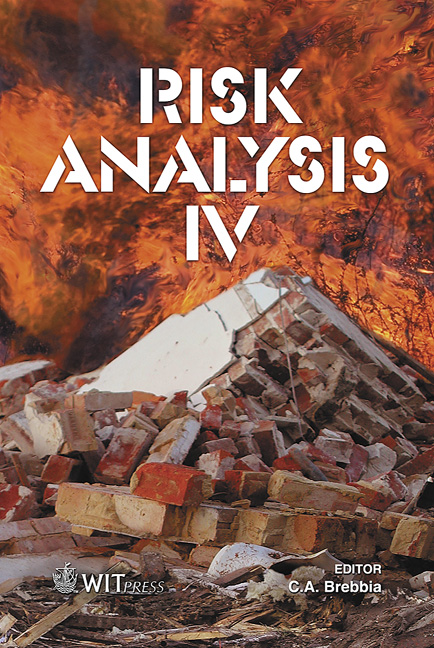Balanced Scorecard Method For Predicting The Probability Of A Terrorist Attack
Price
Free (open access)
Transaction
Volume
77
Pages
12
Published
2004
Size
323 kb
Paper DOI
10.2495/RISK040531
Copyright
WIT Press
Author(s)
G. A. Beitel, D. I. Gertman & M. M. Plum
Abstract
A research and development project at the Idaho National Engineering and Environmental Laboratory (INEEL) built and tested a quantitative threat-risk index model (QTRIM) to predict the risk of a terrorist attack against a national infrastructure. A key component of the threat-risk index model, the \“targeting model”, estimates the probability of a terrorist attack. This paper describes that targeting model. In general, risk from a terrorist attack is calculated as the product of an attack’s probability by probable damage. Defence strategists often assume that a probability of attack is impossible to predict and assign a value of one (a chance of certainty), in which case \“risk assessment” is reduced to \“vulnerability assessment.” In other cases, defense strategists may assume qualitative vulnerability measures such as high, low, or medium. Our research selected a quantitative approach where risk is calculated using terrorist specific constraints, objectives, value systems, logistics, and opportunities within a business decision framework of a balanced scorecard. QTRIM was exercised on a limited data set of terrorist organizations: Al-Qaida and the Earth Liberation Front. Specific to INEEL’s research, the nation’s inventory of infrastructure was evaluated on a macroeconomic level, which was then followed by an evaluation of a specific infrastructure sector. Resulting probabilities were compared to historical terrorist attack data with sufficiently accurate results to warrant further studies and model improvements. Keywords: quantitative risk assessment, QTRIM, SAPHIRE, balanced scorecard, terrorist targeting strategies, probabilities of attack.
Keywords
quantitative risk assessment, QTRIM, SAPHIRE, balanced scorecard, terrorist targeting strategies, probabilities of attack.





